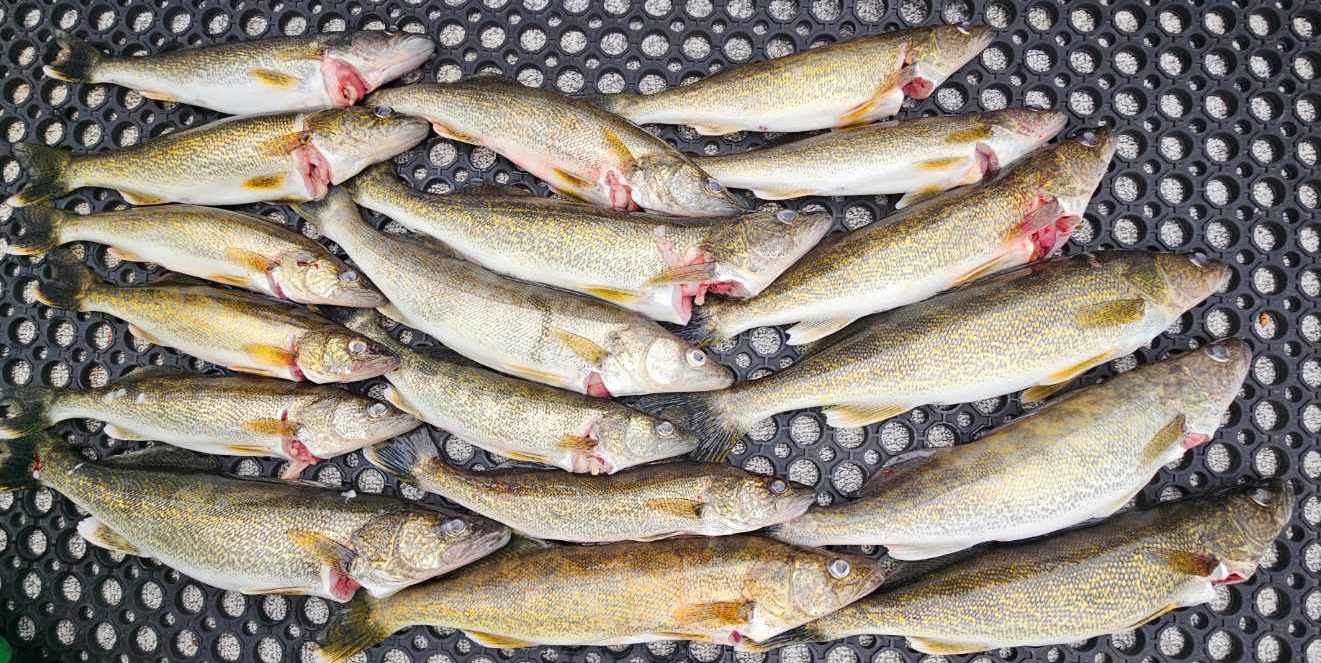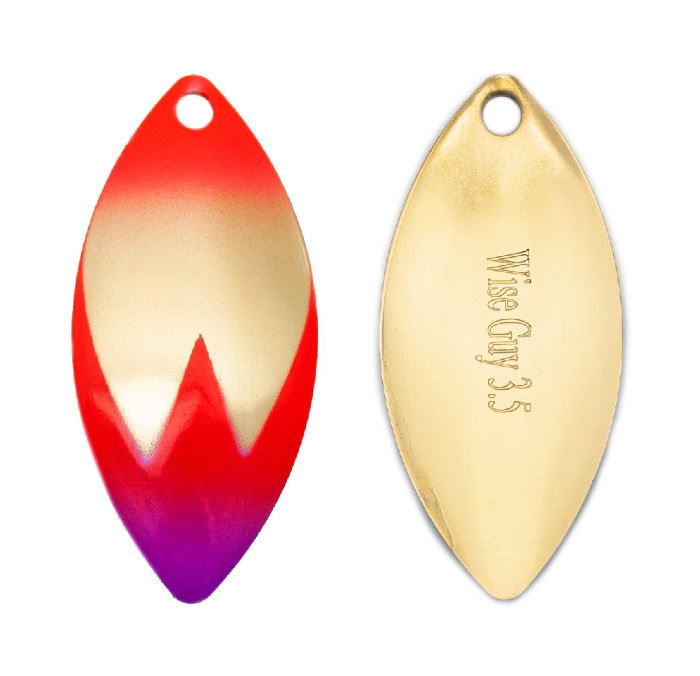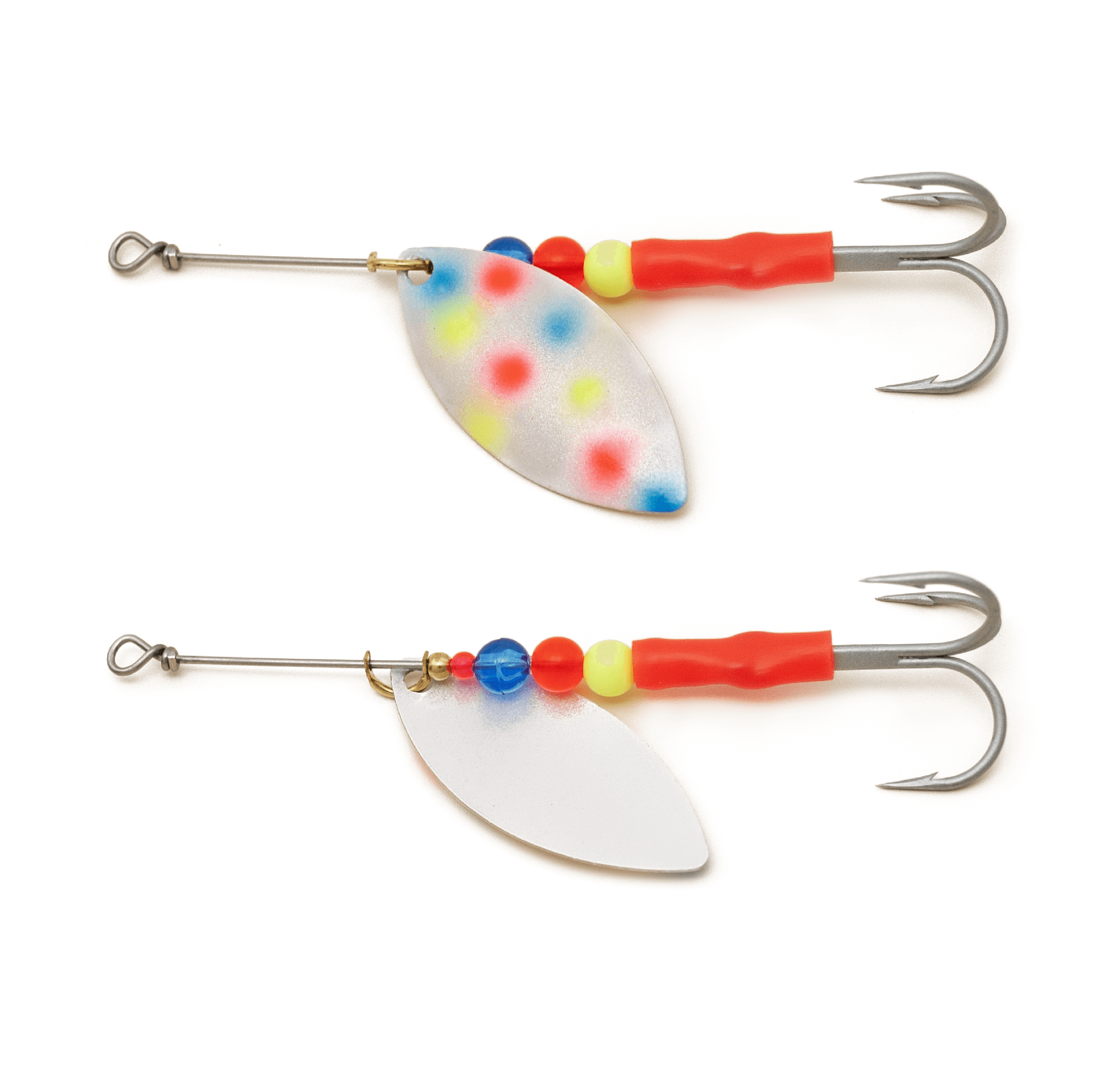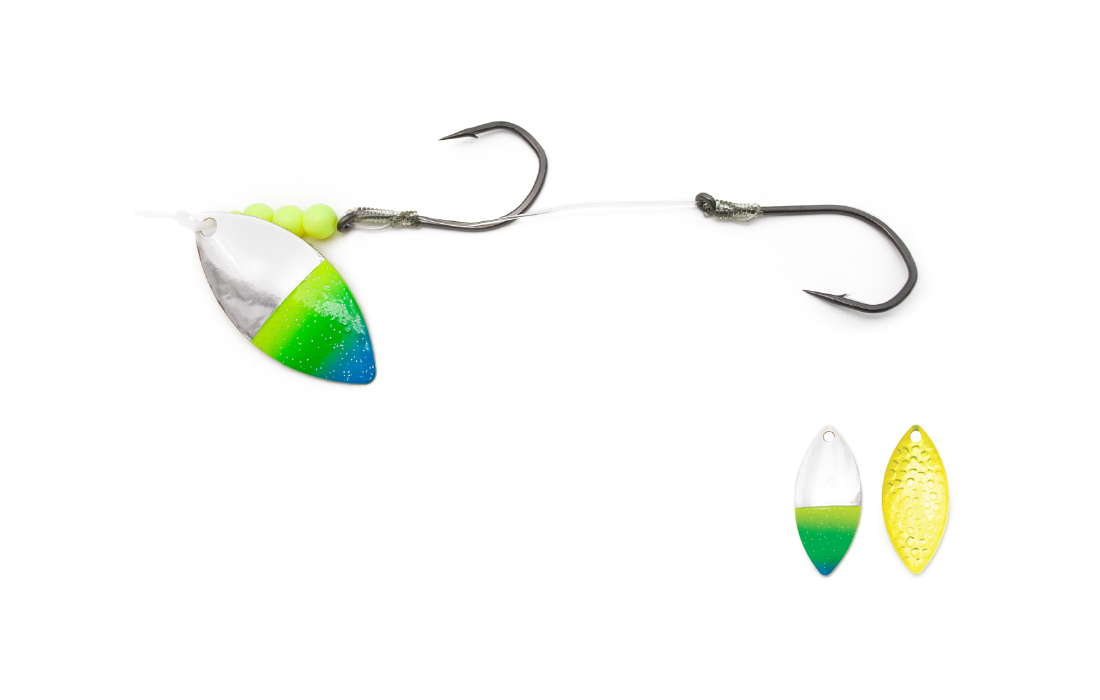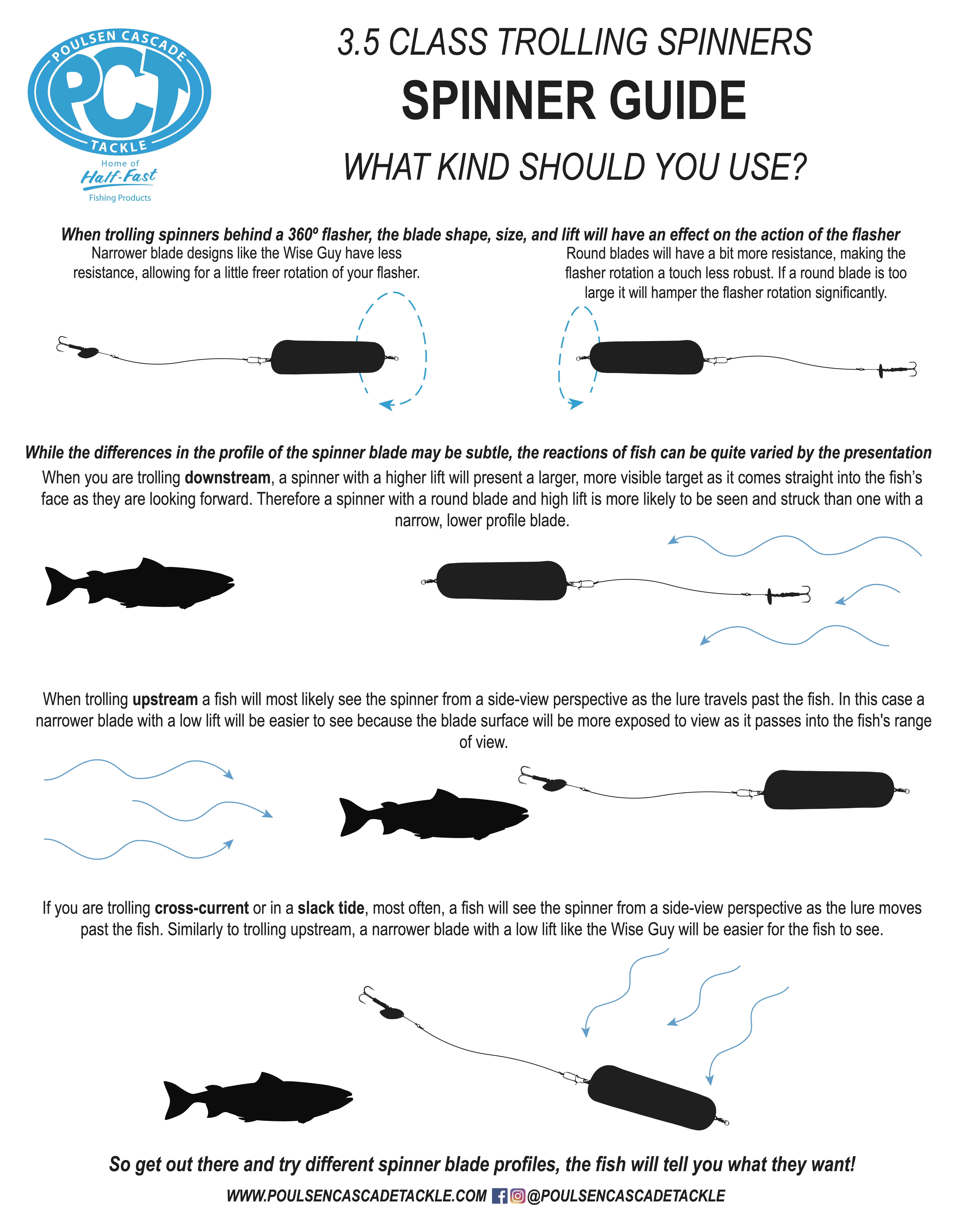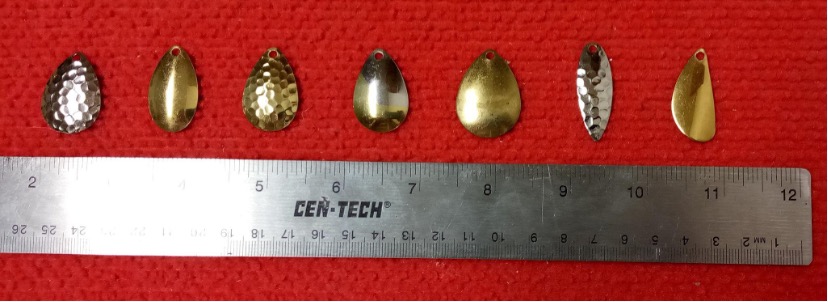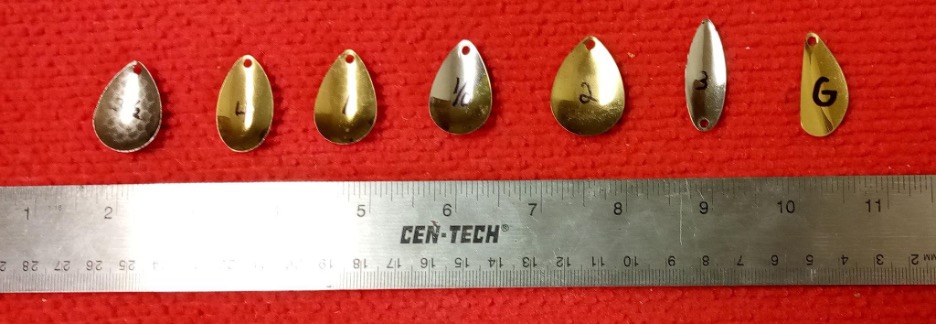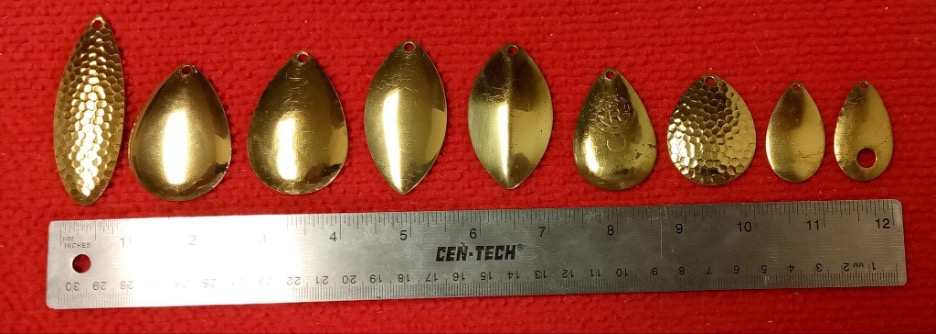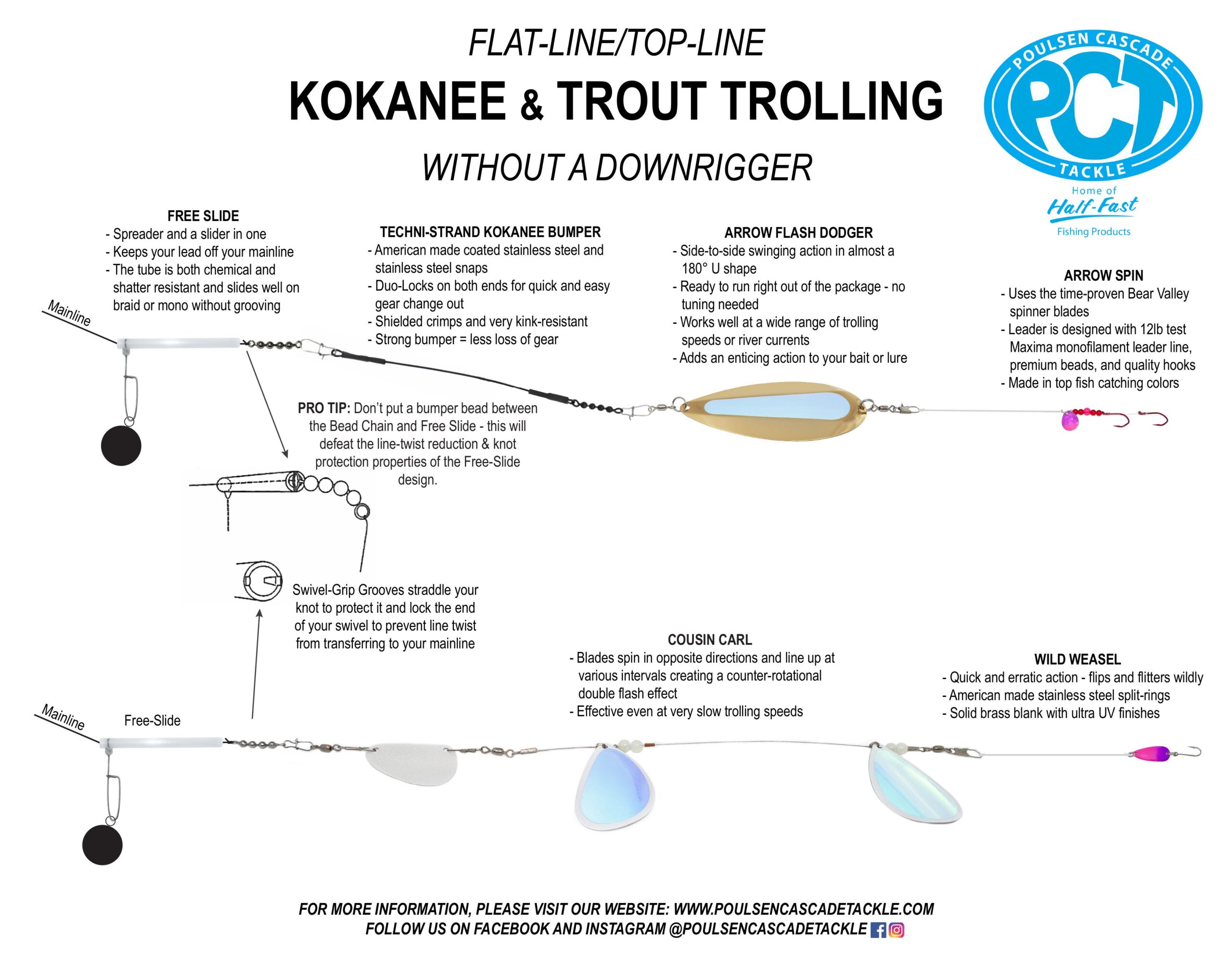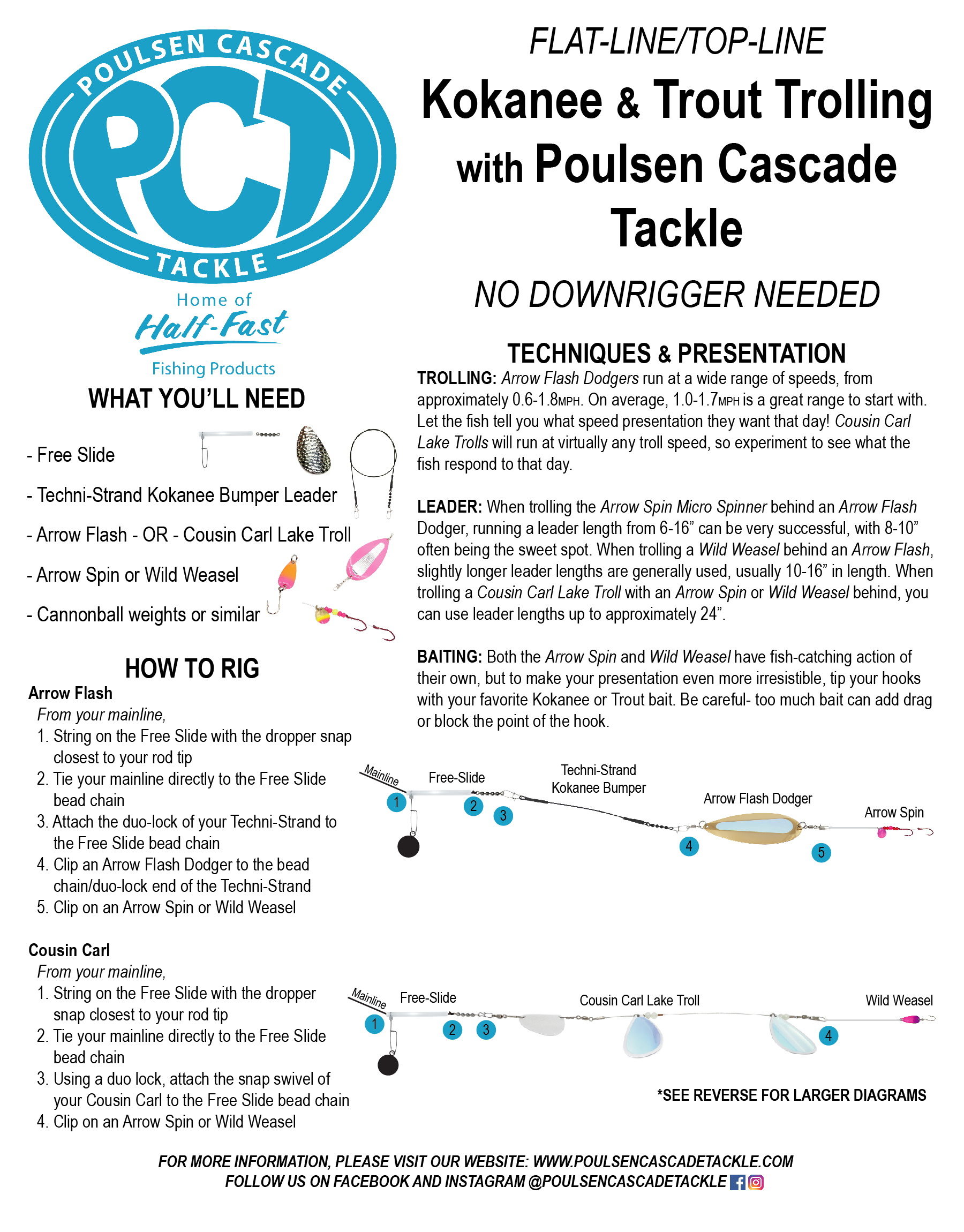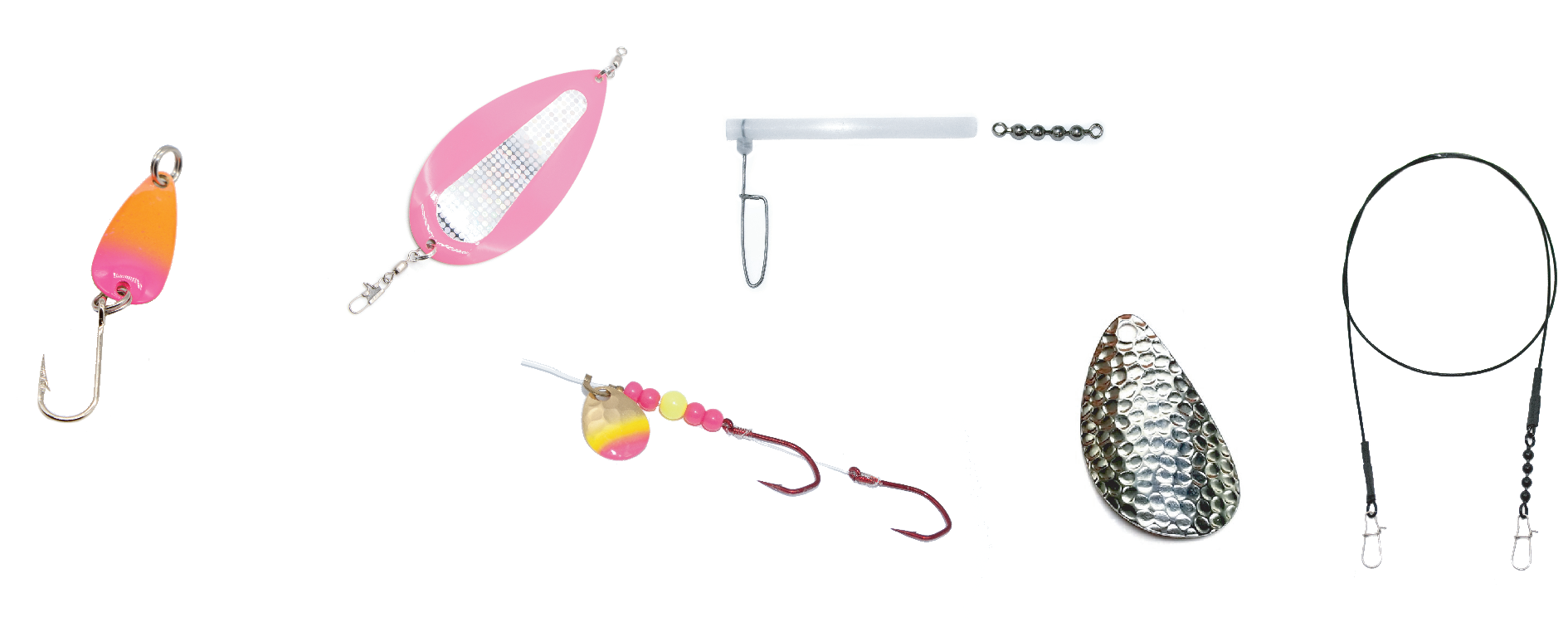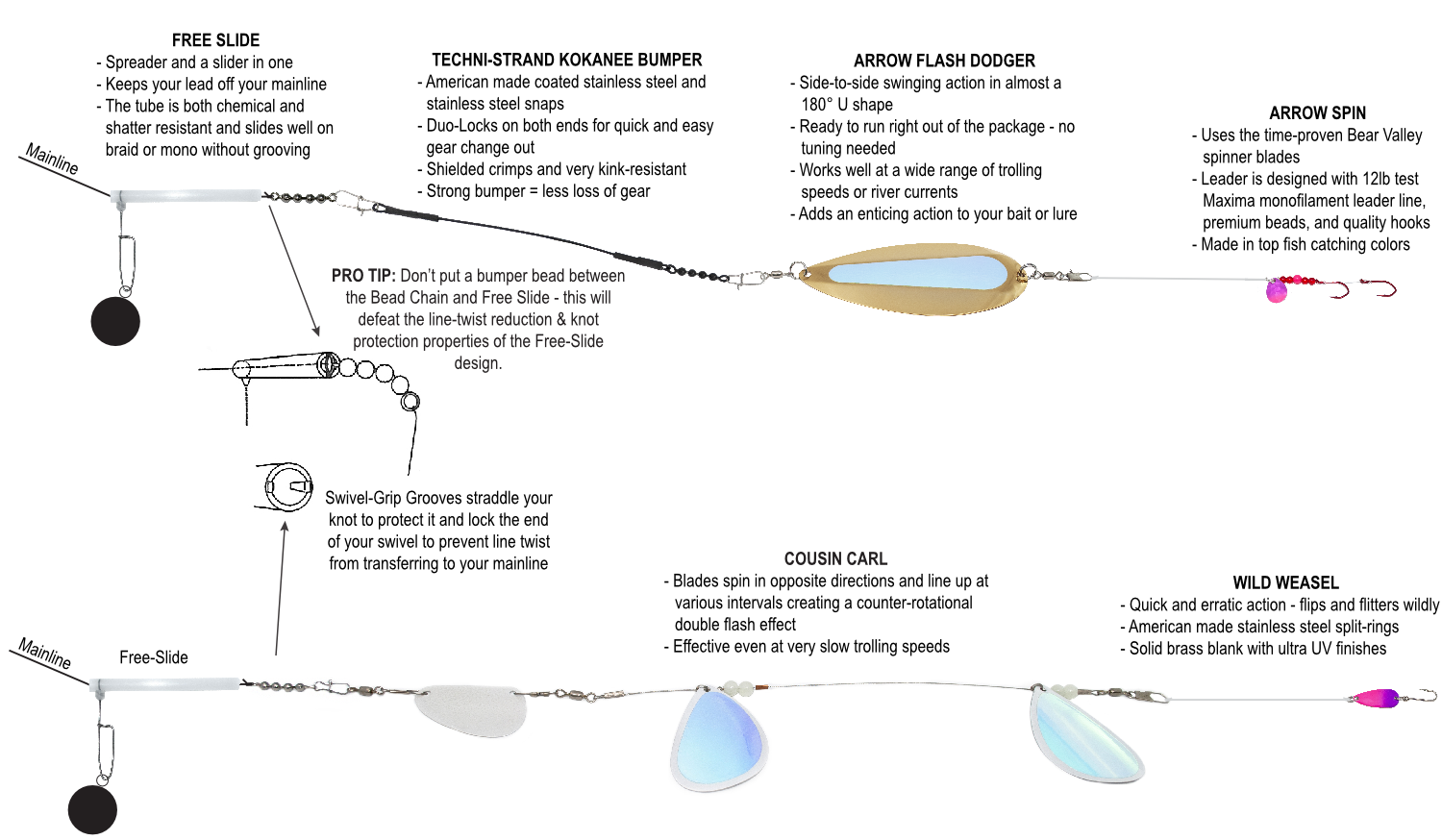Let’s learn what we can from these experts – Brent Soule and Tom Schnell
Q: When you guide Kokanee, how do you decide whether to use downriggers or go flat-lining?
Brent Soule:
The winter months are usually flat-lining times (November to April). Most days during this time of year, there will be a lot of jumpers, indicating that fish are likely near the surface.
I would encourage you to look at your depth finder. If you see schools of fish that are densely packed together, they are most likely pike minnows, not Kokanee. If they are more loosely schooled, they are probably Kokanee.
I usually don’t see fish on my finder until they reach a depth of 30 feet as they move away from the boat in the clear water. This brings us back to the idea of jumpers being an indicator worth observing.
Tom Schnell:
Any time I go below 40 feet down, I use down riggers. Above 40 feet, I usually use a combination of down riggers and long lines/droppers.
I use dodgers with their weight to get down to 10 feet on the long lining. If I am going deeper, I will use a dropper set with 1-3 oz of weight.
I do not like going heavier than 3 oz since it deadens the fight of the fish. I know people who will use up to 6 oz, but I will use my downriggers if I need to go that heavy.
Q: What rod action and length do you prefer for non-downrigger trolling?
Brent Soule:
I prefer slow action 8 to 9-foot rods rated in the 2 to 15-lb range
Tom Schnell:
I like rods 7 1/2 – 8’ in length.
Our favorite long lining and dropper fishing rod is Edge Mag Pro HSR 7111-1, a medium-light 6-15 lb 1/4-5/8 oz rod that measures 7’11”. It is plenty limber for Kokanee and has enough backbone for weights if we need to use it as a dropper rod.
Q: What reel style and line do you recommend for someone who wants to try long-lining for Kokanee?
Brent Soule:
I use small-level wind line counter reels with 8 to 10-lb monofilament lines. The combo of longer rods and mono working together will put more Kokanee on ice due to their soft mouths.
Tom Schnell:
Baitcaster / level wind with a line counter. The key is the line counter. It is important to know how far back you are and to be able to return to that spot.
The two that we use are the Daiwa Lexa 100 LC and the Okuma Coldwater Low Pro LC.
We spool the reels with a 12 lb Maxima Ultragreen (monofilament) line. In our downriggers rods, we go with 10 lb, but for long lining and dropper, we go with a 12 lb line because we sometimes use weights that can fray the line over time.
Q: Do you typically use gang trolls/pop-geers or dodgers? Why? What are your favorites?
Brent Soule:
I use almost exclusively dodgers, as they work with my style of fishing. Plus, you can feel the kokanee at the end of your line compared to the heavier dragging gang trolls or pop gear.
- #1 color day in and day out, any time of year, is the gold-plated Arrow Flash Dodger.
- #2 pink netted wings,
- #3 50/50 Brass,
- #4 copper/moon glow and,
- #5 Wonder Bread.
Tom Schnell:
We use both for long lining and dropper rods.
- For long lining or dropper rods, we prefer heavier dodgers or ones that have a material tendency to dive on their own.
- For down riggers, our primary dodger is the PCT Arrow Flash dodger.
- For lake trolls, Cousin Carl is tough to beat. It does require some weight, though, to get it down to the depth you want.
Q: What does your standard setup consist of? Do you use sinker sliders? What about bumper leaders?
Brent Soule:
On the end of my main line, which is always mono (I don’t care for braid), I slide a sinker slider onto the line and tie it to a swivel.
Then I snap on a 36” bumper, then snap on a Dodger, then tie on either a Twirly Gig rig or a soft tied small, bladed spinner with two single size 2 hooks on a 20” leader to start.
I can shorten the leader as the fish tell me what they want.
Tom Schnell:
Whenever we use a dropper set, we use a sliding sinker, which requires a bumper leader.
If you do not use a bumper leader, the weight will sit on top of the dodger, ruining the dodger’s action. We use between an 18-24” bumper.
Q: Do you get the best results from spinner rigs, little spoons, hoochies, or something else?
Brent Soule:
The best Kokanee rig is a soft-tied spinner rig with micro-size blades.
I usually don’t use hoochies with blades as that is a larger bait size than I like.
Twirlee Gigs are another great choice. Occasionally, I use small Spin-n-Glos, and several plug-type lures work well.
Tom Schnell:
All of it works, and none of it works. We have found that the color and speed often dictate the results.
We use spinners, little spoons, hoochies, shrimp, and even little cut plugs. The main thing is to have a variety and mix it up. What works today may not work tomorrow. As far as that goes, what is working right now may not work an hour from now!
Q: Regardless of your setup, ‘business end,’ do you tip with bait? If so, what kind?
Brent Soule:
I use shoe peg corn and a can of tuna oil out of a can of tuna.
- Open and drain the can of corn, dump the corn in a container, and squeeze the tuna oil into the corn.
- Only put one kernel of corn on each hook.
- If you put more kernels on the hooks, you kill the lure’s action.
- I am not into coloring the corn or using a lot of different scents.
- If I use scent, I use a small container to do just a small batch at a time.
- If you scent the whole batch, you are stuck with that scent, and the Kokanee may not want that scent.
Regardless of your bait program, keep your bait on ICE!
Tom Schnell:
Bait is critical! Without it, your results will diminish.
Number one for us is white Shoepeg corn, followed up with either live (if you can find them) maggots or Berkeley Gulp maggots work, too.
Shrimp can also work in some lakes, although trout tend to like them too.
Using scent on your bait is also something we do: tuna in oil, garlic, shrimp, and anise are all scents we use, often in combination. Again, each lake will vary depending on the scent the Kokanee wants and the time of the year.
Q: Do you have any other advice to share with aspiring kokanee anglers?
Brent Soule:
I would like them to hire me to take them fishing. One of the great things about Kokanee fishermen is they will share information freely. If you’re out on the water and see a boat catching, keep your distance and ask them for a tip or two. You will be surprised how much help some can be.
There are many how-to tips on the internet to watch and learn from. Some of the best sources are the various Kokanee Facebook Groups and forums.
Don’t set the hook and reel according to how the Kokanee is fighting. Never stop reeling, and don’t pump the rod. Just hold it at an angle to use the rod’s action. Lower the rod when the fish is close to the boat. Kokanee is frequently lost when the Dodger pops out of the water, and they go nuts.
Tom Schnell:
Have a boat or a kayak with good electronics. Read all you can on how to fish for kokanee, and then spend time on the water, gaining invaluable experience.
As for Tyler Hicks, let’s let one of his past videos speak for itself:





